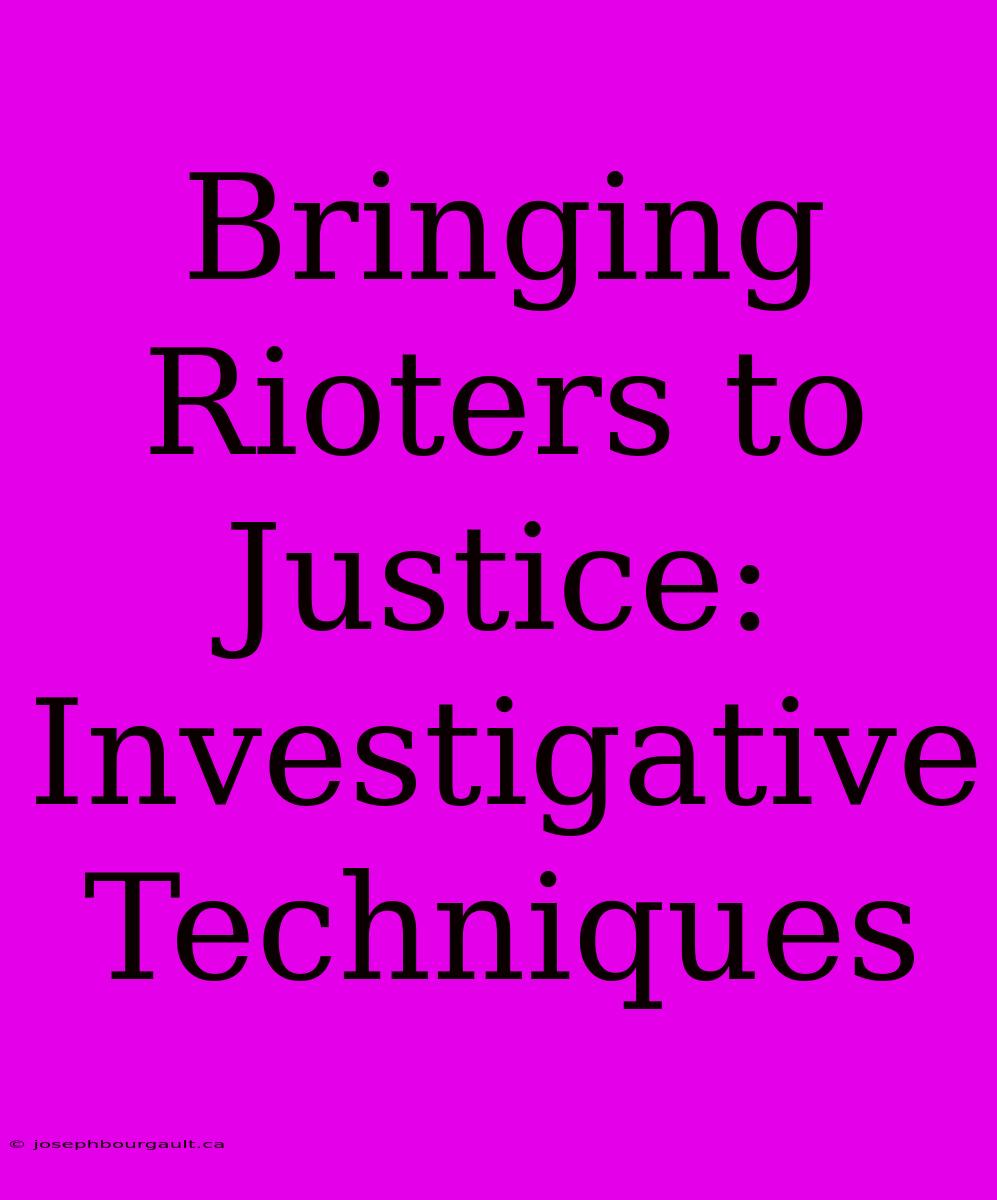Bringing Rioters to Justice: Investigative Techniques
The aftermath of a riot can leave a community reeling, with damage to property, businesses, and the very fabric of social trust. Bringing the perpetrators to justice is crucial for restoring order and holding those responsible accountable.
This article explores the investigative techniques used to identify and apprehend rioters, highlighting the challenges and complexities involved.
Identifying the Perpetrators
1. Surveillance Footage:
- CCTV Cameras: Security cameras in public and private spaces often capture valuable footage of the riot, providing crucial visual evidence of individual actions and movements.
- Social Media: Social media platforms are becoming increasingly important in investigations. Videos and images shared online can identify perpetrators, even if they are disguised.
- Drone Footage: Drones equipped with cameras can provide a broader aerial perspective, offering a unique viewpoint of the riot and the actions of individuals.
2. Digital Forensics:
- Phone Records: Data from mobile phones can help pinpoint the location of individuals during the riot, as well as reveal communication patterns between suspects.
- Internet Activity: Investigators can analyze online activity, including browsing history and social media posts, to identify individuals who may have incited or participated in the riot.
- Facial Recognition: Advanced facial recognition software can be used to identify individuals from surveillance footage, even when they are obscured by masks or hoods.
3. Witness Testimony:
- Eyewitnesses: Eyewitness accounts can be vital in identifying individuals involved in the riot and reconstructing the events.
- Police Officers: Police officers present at the scene can provide first-hand accounts of the riot and identify potential suspects.
4. Physical Evidence:
- Weapons: Any weapons used during the riot can be traced back to their owners, providing evidence of their involvement.
- DNA: DNA evidence can be collected from items left at the scene, such as masks, gloves, or clothing.
- Fingerprints: Fingerprints left on damaged property can be used to identify individuals who were present during the riot.
Challenges and Considerations
- Anonymity: Rioters often use disguises, masks, and anonymity-enhancing technologies to conceal their identity.
- Volume of Data: The sheer volume of data generated during a riot, from surveillance footage to social media posts, poses a significant challenge for investigators.
- Bias: There is always a risk of bias in investigations, particularly if the riot is linked to political or social movements. It's crucial to ensure objectivity and fairness throughout the process.
Bringing Perpetrators to Justice
- Arrests and Charges: Identifying and apprehending suspects is only the first step. Prosecuting rioters can be complex, requiring strong evidence and careful consideration of individual actions and intent.
- Sentencing: Sentencing for rioting offenses can vary depending on the severity of the crime and the individual's role in the riot.
- Rehabilitation: While punishment is necessary, efforts to address the root causes of the riot and provide rehabilitation programs for convicted rioters can help prevent future violence and build a more peaceful society.
Conclusion
Bringing rioters to justice is a complex and multi-faceted process, requiring a combination of investigative techniques, forensic analysis, and legal expertise. While the challenges are significant, it is essential to hold perpetrators accountable for their actions to restore order, deter future violence, and ensure that justice prevails.

